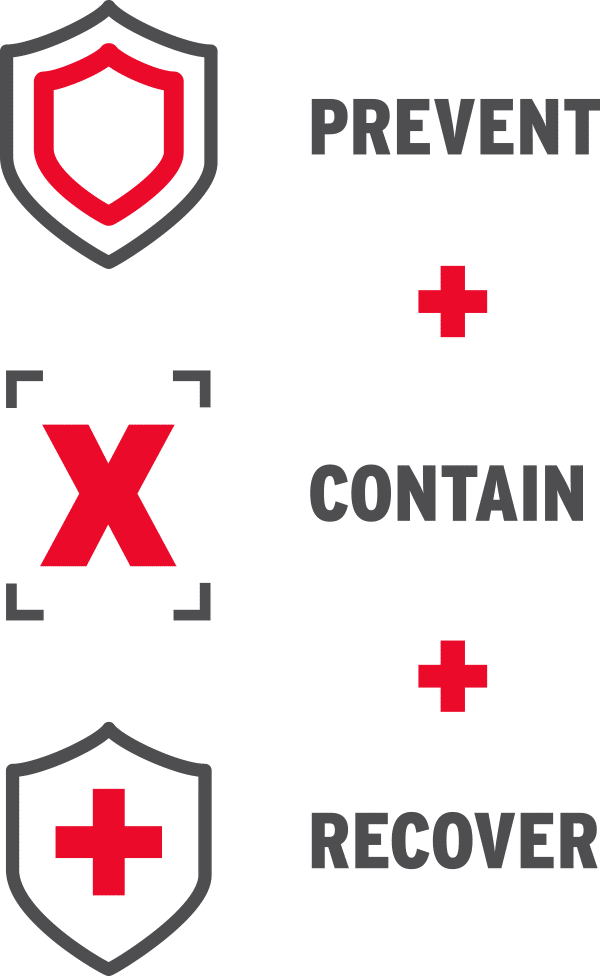Preventing Ransomware is Part of a Good Idea
Ransomware attacks are a real concern for businesses of all types and sizes. Bad actors use malware to lock down critical systems and demand payment. The crippling effects can significantly damage, or even shutter, unprepared businesses. So, what’s an organization to do?
The obvious strategy is to avoid being a victim. It makes sense. If bad actors can’t deliver their malware, they can’t lock you out. Your business never suffers. No one faces tough decisions about whether or not to pay a ransom. No one loses their job.
The problem with relying solely on prevention is that defenses sometimes do get beat. As the old adage goes, “defenders have to succeed 100% of the time, but the adversary has to succeed only once.” Chances are that someone in your organization, at some point, is going to click on something that they shouldn’t. Or that some critical vulnerability will remain unpatched just a little too long.
Prevention is critical, but it is not enough. That’s why a comprehensive ransomware strategy focuses not just on prevention, but plans for containment and recovery as well. Defend with the assumption that you’ll one day be a victim, and you will greatly reduce vulnerability and minimize damage from successful ransomware attacks. Taking this comprehensive approach to ransomware attack resilience will help to keep you in control and achieve peace of mind. And the best time to do that is now — before an incident.

Defend the Wall
There are many protections recommended for defending against malware. These include email protections, anti-virus and malware defenses on your endpoints, staying current on patching, continuous vulnerability management, controlling use of administrative privileges, and having a secure configuration of network devices. Of course, training and ensuring staff follows security protocol is also critical when it comes to ransomware defense.
Follow Backup Best Practices
Just as important is to prepare for the worst. Have good backups! The quickest way to recover operations, and not risk losing critical data, is to have it duplicated and securely stored. Having safe backups means never even having to consider ransomware demands.
Be Proactive
Assess your ransomware preparedness strategy so you can make improvements where necessary. For those wanting targeted guidance, our Ransomware Protection consulting delivers just that. Our expert team efficiently assesses your ability to prevent, respond to, and recover from ransomware attacks, and delivers prescriptive guidance based on proven practices. And if you need help implementing, we can do that too.
The secret to beating extortion is simple — minimize your likelihood of being a ransomware victim and maximize your ability to respond if a threat were to succeed.

AARON SIERRA
Aaron Sierra, Director of Solution Architecture at GMI, is a passionate cyber security leader and consultant with nearly two decades of developing, leading, and advising diverse security programs. Leveraging this deep experience, Aaron advises security programs of all sizes and maturity levels with highly-differentiated security solutions that address the most daunting security challenges of each unique organization. He is also an avid surfer who strives to make regular appearances on the waves near his home in southern California.
